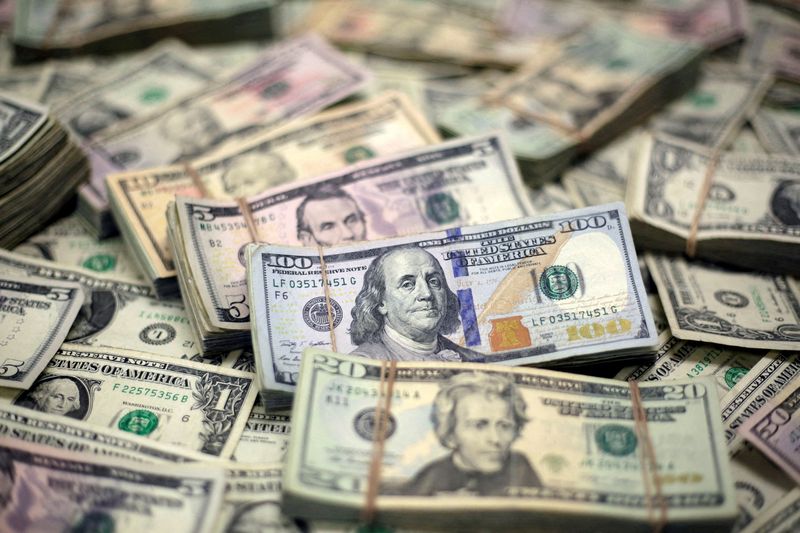By Ankur Banerjee
SINGAPORE (Reuters) -The dollar hovered near a six-week high on Friday ahead of a payrolls report that could decide the path of U.S. interest rates, while the yen surged to cap a turbulent week hit by uncertainty over Japan’s monetary policy outlook.
The dollar was also boosted by safe-haven demand as investors weighed widening Middle East tensions and their impact on the global economy.
The , which measures the U.S. unit against six peers, was last at 101.88, not far from a six-week peak of 102.09 touched on Thursday. The index is up nearly 1.5%, for the week, its strongest such performance since April.
Regaining some ground lost over the week, the yen rose 0.5% to 146.18 per dollar, though it remained close to an over six-week low of 147.25 hit a day earlier.
Even so, it’s on track to log a 2.7% decline this week, its most insipid weekly performance since May 2022 after comments from new prime minister, Shigeru Ishiba, stoked expectations that rate hikes in Japan are further away.
The spotlight on Friday though will be on the U.S. non-farm payrolls report after data on Thursday showed the U.S. labour market gliding at the end of the third quarter.
Economists polled by Reuters expect 140,000 job additions, while unemployment is anticipated to keep steady at 4.2%.
“There is little evidence to suggest a U.S. hard landing is on the horizon,” said Prashant Newnaha, a senior Asia-Pacific rates strategist at TD Securities.
“Our sense is that the risks to September non-farm payrolls lie to the upside and should see U.S. Treasuries continue their push higher in yield.”
The jobs report comes as markets contend with an improving U.S. economic picture and a more hawkish tone from Federal Reserve Chair Jerome Powell, who dashed some hopes on Monday that it would go big on interest rate cuts again next month.
Markets are pricing in a 33% chance of the Fed cutting interest rates in November by 50 basis points (bps), down from 49% last week, the CME FedWatch tool showed. The Fed cut interest rates last month by 50 bps.
A stronger-than-expected September payrolls number could be viewed as dovish, said Kieran Williams, head of Asia FX at InTouch Capital Markets, as it would bring the unemployment rate in line with the Fed’s end-2024 forecast.
“This may prompt some officials to consider a 50bp rate cut at in November,” he said.
DOVISH JAPAN COMMENTS
Investors are digesting a plethora of dovish comments from Japanese politicians and policymakers. Chief among them was Ishiba’s statement that the economy was not ready for further rate hikes – a surprisingly blunt remark that pushed the yen lower. With Japan’s general elections set for Oct. 27, analysts broadly expect the BOJ to hold rates in the near term.
Sterling was nursing losses after sliding 1% on Thursday after Bank of England Governor Andrew Bailey said the central bank could aggressively cut rates if inflation pressures continued to ease.
On Friday, the pound last fetched $1.3127, close to a three-week low of $1.3093 touched on Thursday. It has risen more than 3% this year, largely on market expectations for the BoE to keep rates higher for longer.
“Bailey on Thursday stuck the boot into the pound’s great bull run,” Ray Attrill, head of FX research at the National Australia Bank (OTC:) (NAB), said in a note.

Elsewhere, the Australian dollar was little changed at $0.6843 but was down 0.8% for the week and set for its first weekly decline in four.
The euro was steady at $1.102925, having dropped 1.2% this week.